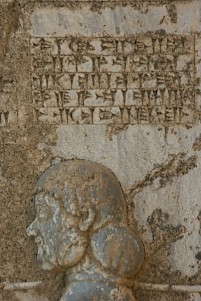Vahyazdata
Vahyazdâta: Persian nobleman who attempted a coup d'état in 521 BCE.

In 525 BC, king Cambyses had conquered Egypt, and before he left, he had had his brother Smerdis executed. However, a look-alike named Gaumâta had been able to proclaim himself king; Cambyses died when he marched back to Asia, and Gaumâta remained was sole ruler. However, his rebellion was suppressed in September 522 BCE by a new Persian leader, Darius I the Great.
Immediately, new rebellions started, and while Darius was occupied in Babylonia and Media, Vahyazdâta proclaimed himself king, saying that he was the real Smerdis, and gained support in Persia. He was powerful enough to appoint a satrap to rule Arachosia (who was defeated by Darius' own satrap, Vivâna).
We do not know much about Vahyazdâta's background, but it is possible that he was, as a Persian nobleman, in the army of Cambyses when the latter died in July. It is possible that Vahyazdâta had a better claim to the throne than Darius (or thought so), and revolted against this new upstart king, who was not related to Cambyses.
Vahyazdâta was defeated by Darius' general Artavardiya on May 24 near Rakhâ (modern Behbehân), and a second time on July 14 near the mountain Parga (near the modern town Forg). The usurper was captured and crucified.
He is represented on Darius' monument at Behistun.